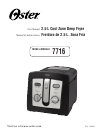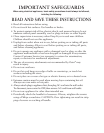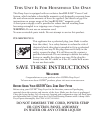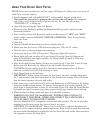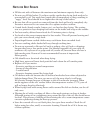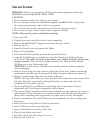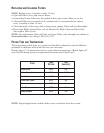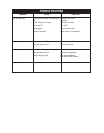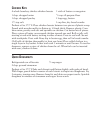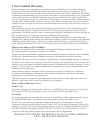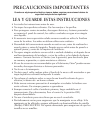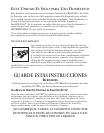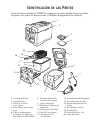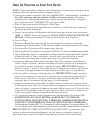H
INTS FOR
B
EST
R
ESULTS
• Fill the unit with oil between the maximum and minimum capacity lines only.
• Do not over fill the basket. To achieve quality results deep frying food needs to be
surrounded by oil. Too much food causes the oil temperature to drop, resulting in
“soggy” food. Food should be no higher than the top of the basket.
• Be sure that all ice crystals are removed from the food and food is completely dry.
Excessive water and ice can cause the oil to splatter and/or overflow.
• Coated foods (bread crumbs, batters, etc.) are best for deep frying. The coating
acts as a protective layer keeping food moist on the inside and crisp on the outside.
• For best results, defrost frozen foods for 20 minutes prior to frying.
• Fry foods at the correct temperature for best results. This will prevent burning and
give you even colored, crispy food.
• Prepackaged frozen cooked chicken may cook faster than uncooked food.
• For even cooking, shake basket half way through cooking time.
• Do not use seasoned or flavored oil such as walnut, olive oil, lard or drippings
because they have a low smoke point. Use blended vegetable oil, pure corn oil,
sunflower oil, soybean oil or grape seed oil (canola oil) because these oils have a
high smoke point. Peanut oil is not recommended because it impacts the
flavor greatly.
• Oils should never be mixed when deep frying.
• High heat, water and burnt food particles break down the oil’s smoke point.
• Replace oil if you notice:
- Excessive smoking at normal temperatures
- Strong oil discoloration
- A rancid smell
- Excessive foaming around the frying food
• Oil darkens with use because the oil and food molecules burn when subjected to
high/prolonged heat. The more you use an oil, the more slowly it will pour.
Its viscosity changes because of changes to the oil’s molecular structure. When
smoke appears on the oils’ surface before the temperature reaches 375°F, your oil
will no longer deep-fry effectively.
• When frying foods with strong flavor and/or aroma like fish or chicken, use the oil
only once.
• Filtering the oil with a cooking oil filter or fine-mesh strainer can keep it fresher.
Although storing oil in a refrigerator may extend the life of the oil, this should never
be done. This process of chilling oil then brining the oil to room temperature causes
excessive splattering during the heat up process.
• Store the covered oil in a cool dark place, for up to three months. Check the oil
before using for color, smell, or excessive foaming. Discard the oil if it shows any
of these qualities.



